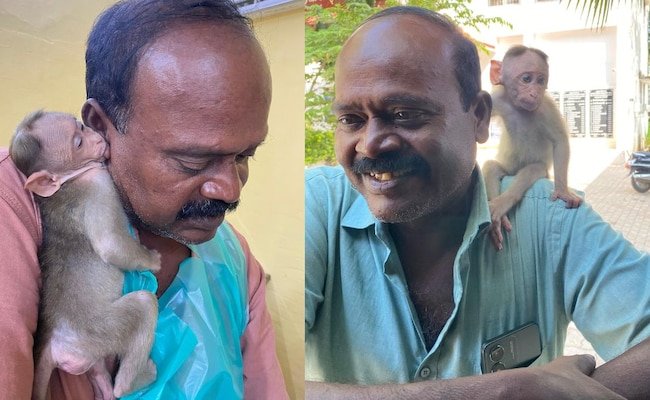
LUCKNOW: A rose is a rose is a rose’ was Gertrude Stein’s take on Shakespeare’s ‘a rose by any other name would smell as sweet’. But that’s esoteric. We are here to discuss the more commonplace ‘raita’. The Hindi-speaking population of north India uses the term more often for ‘messy situations’ rather than the dahi-based side dish that goes best with biryani.
The ‘raita’ more recently was spilled by the Food Safety and Standards Commission of India’s (FSSAI) order to print ‘dahi’ in Hindi on curd packets in Karnataka and Tamil Nadu. After the outrage in the two states led by all political parties over the mandatory use of Hindi term in the southern states, the FSSAI had to withdraw the order on Thursday. But by then, as they say, ‘raita’ was all over the place.
The episode has brought the focus on the use of language in food and vice versa. They inadvertently find their way into each other with rising complications.
For example, mentions in chaste European terminology about desi food items on restaurant menus often get our goat. Remember ‘pocket of fried dough filled with spiced potato and peas’? Precisely, that’s ‘samosa’ on the menu of an aspiring Michelin star restaurant. The vegetarian variety, with its origin in west Asia (from Middle Persian ‘sanbosag’ and Arabic ‘sambusak’), is almost a claimant to India’s national snack, which often ‘snakes’ around the English-language menus on the walls of the country’s roadside eateries.
Phrases like ‘getting the goat’, ‘currying favours’, ‘cookie crumbles’ are English parallels, though not in terms of meaning, to Hindi’s ‘roti sekna’, ‘raita phailna’, ‘dal galana’. There is so much food in languages – and sadly, more often in a negative sense. Like, ‘in the soup’, ‘occupe-toi de tes oignons’ (French, literally ‘take care of your onions, which mean ‘mind your business’), ‘in vino veritas’ (Latin, meaning a drunk man speaks the truth” or ‘sar kadhai me dena’ (Hindi for inviting trouble).
The use of language in food, on the contrary, is mostly pointless as food communicates in its own way, and rather more effectively. For example, it would be so gargantuan a task to trace the etymology of ‘nimona’, ‘anarsa’, or more familiar ‘chawal’, an Urdu term possibly originated from Punjabi ‘chaul’ or Sindhi ‘chaunru’. Even the famed Persian ‘chelo’ (rice) has been derived from an Indic language. Chelo rice and chelo kebabs are Persian delicacies popular all over the world. The Sanskrit terms for rice are ‘dhan’ and ‘vrihi’.
In defying the unnecessary boundaries of language, I find ‘paratha’ to be the coolest of the lot. Originally from Sanskrit, the term finds mention in Manasollasa, a 12th-century Sanskrit encyclopedia compiled by Someshvara III, a Western Chalukya king who ruled from present-day Karnataka. But paratha (Hindi, Odia & Urdu), porota (Bengali), parotta (Tamil, Malayalam and Sinhalese), parantha (Punjabi & Sindhi) and patala (Myanmar) have mapped half the world in its various avatars, making its way into the cuisines of various dozen countries where wheat is the staple diet.
To conclude, as long as dahi isn’t sour, there is no need, nor any case, for ‘raita’.
The ‘raita’ more recently was spilled by the Food Safety and Standards Commission of India’s (FSSAI) order to print ‘dahi’ in Hindi on curd packets in Karnataka and Tamil Nadu. After the outrage in the two states led by all political parties over the mandatory use of Hindi term in the southern states, the FSSAI had to withdraw the order on Thursday. But by then, as they say, ‘raita’ was all over the place.
The episode has brought the focus on the use of language in food and vice versa. They inadvertently find their way into each other with rising complications.
For example, mentions in chaste European terminology about desi food items on restaurant menus often get our goat. Remember ‘pocket of fried dough filled with spiced potato and peas’? Precisely, that’s ‘samosa’ on the menu of an aspiring Michelin star restaurant. The vegetarian variety, with its origin in west Asia (from Middle Persian ‘sanbosag’ and Arabic ‘sambusak’), is almost a claimant to India’s national snack, which often ‘snakes’ around the English-language menus on the walls of the country’s roadside eateries.
Phrases like ‘getting the goat’, ‘currying favours’, ‘cookie crumbles’ are English parallels, though not in terms of meaning, to Hindi’s ‘roti sekna’, ‘raita phailna’, ‘dal galana’. There is so much food in languages – and sadly, more often in a negative sense. Like, ‘in the soup’, ‘occupe-toi de tes oignons’ (French, literally ‘take care of your onions, which mean ‘mind your business’), ‘in vino veritas’ (Latin, meaning a drunk man speaks the truth” or ‘sar kadhai me dena’ (Hindi for inviting trouble).
The use of language in food, on the contrary, is mostly pointless as food communicates in its own way, and rather more effectively. For example, it would be so gargantuan a task to trace the etymology of ‘nimona’, ‘anarsa’, or more familiar ‘chawal’, an Urdu term possibly originated from Punjabi ‘chaul’ or Sindhi ‘chaunru’. Even the famed Persian ‘chelo’ (rice) has been derived from an Indic language. Chelo rice and chelo kebabs are Persian delicacies popular all over the world. The Sanskrit terms for rice are ‘dhan’ and ‘vrihi’.
In defying the unnecessary boundaries of language, I find ‘paratha’ to be the coolest of the lot. Originally from Sanskrit, the term finds mention in Manasollasa, a 12th-century Sanskrit encyclopedia compiled by Someshvara III, a Western Chalukya king who ruled from present-day Karnataka. But paratha (Hindi, Odia & Urdu), porota (Bengali), parotta (Tamil, Malayalam and Sinhalese), parantha (Punjabi & Sindhi) and patala (Myanmar) have mapped half the world in its various avatars, making its way into the cuisines of various dozen countries where wheat is the staple diet.
To conclude, as long as dahi isn’t sour, there is no need, nor any case, for ‘raita’.
source
The post is published through a syndicated feed and attributed to Times Of India



